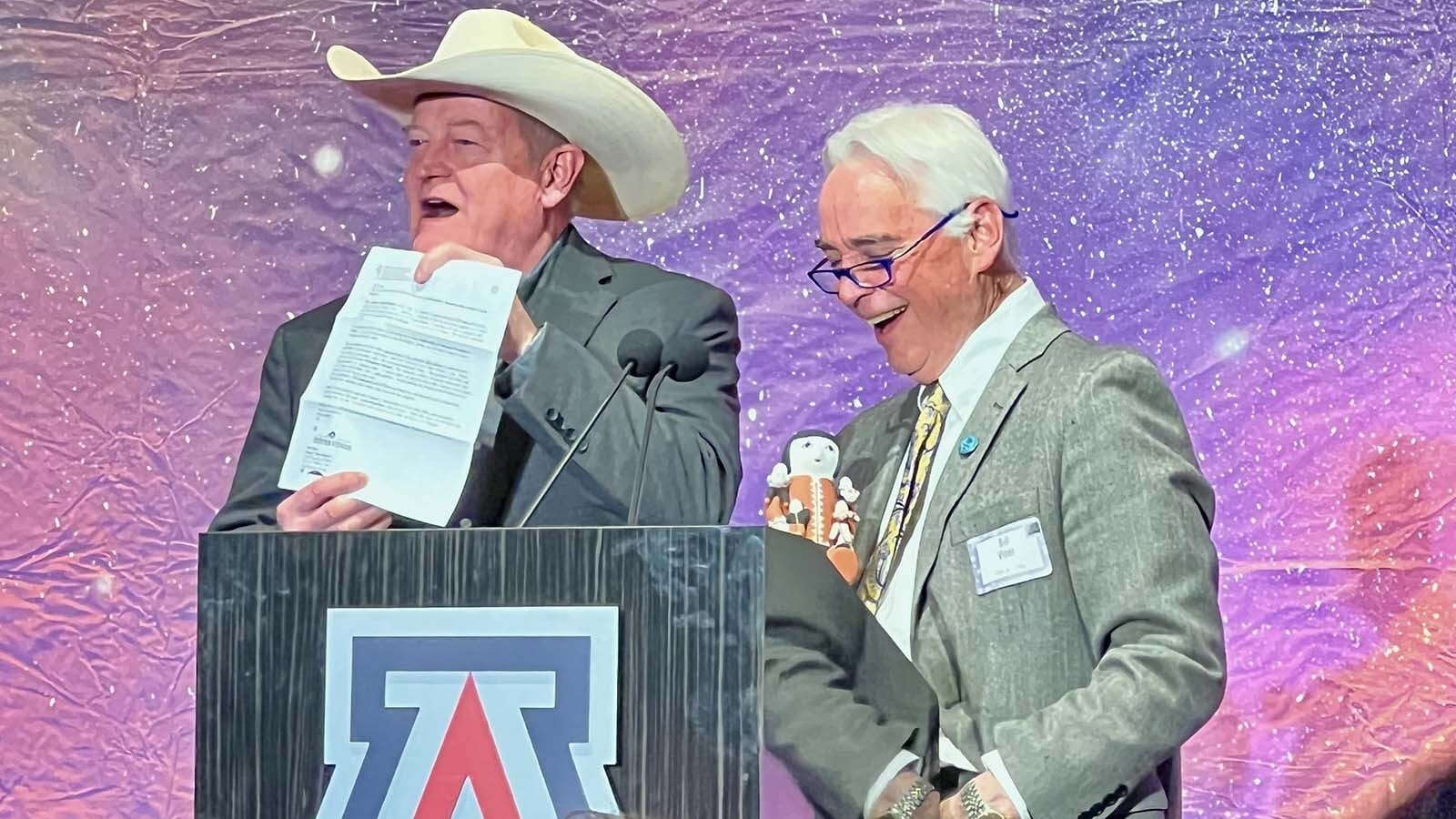The winter weather system that moved across Wyoming overnight Tuesday into Wednesday dumped a lot of wet, heavy snow across much of Wyoming. It’s the first significant snowfall of what’s already anticipated to be a colder, snowier season.
“There were some impressive totals if you combine the rain and snow,” said Cowboy State Daily meteorologist Don Day. “Some of the really dry areas in northeast Wyoming got great amounts of moisture.”
Day added that some of the moisture from the snow set records for this time of year.
“Casper set a new record for this date,” he said. “I was very happy with the amounts of moisture we saw, especially since how dry it's been.”
Highs And Records
Casper got 16 inches of snow, totaling 0.85 inches of water during the week, setting a new snowfall record for Oct. 29, although snow never falls evenly across Casper.
“Casper is a place where snow on the south end of town is always heavier than the north end because of the elevation differences,” he said. “It looked to me like at least five inches of snow fell across the Casper area, which added up to 0.85 inches of water, which is fabulous.”
Casper wasn’t the only place to set a record. Worland received a total of 0.57 inches of water from the storm.
The most snow fell on Wright, with the National Weather Service reporting around 13 inches during the same period. Gillette got between 4 and 6 inches of snow, totaling 1.09 inches of water for the parched region.
The wet and heavy snow was too much for some trees in the northeast Wyoming city, which posted photos of crews cleaning up downed branches and slick, slushy roads.
According to the National Weather Service Office in Riverton, 4 to 6 inches of snow fell around Rock Springs, Green River, Evanston and Lander, and at least that much was recorded in the Absaroka, Bighorn and Wind River ranges.
Outside The Strip
The winter system moved diagonally, going from the southwest to the northeast corners of Wyoming. Regions within 75 miles of “the strip” received the heaviest snowfall.
Outside the strip, at least 3 inches of snow was reported at the Old Faithful Geyser Basin in Yellowstone National Park, and some flakes fell over Cody and Riverton.
While the impact of the system continued Wednesday, Day said most of its strength has been spent. It’ll remain cold Thursday for trick-or-treaters.
“The system is essentially done in terms of its bigger impacts,” he said. “It was spitting snow over Laramie this morning, but we're down to just light snow showers.”
One impact that will remain is the drop in temperature that the system helped usher in. It will be bone-chillingly cold on All Hallow’s Eve, with overnight temperatures ranging from the mid-30s to the low 20s.
“It's going to be one of the colder Halloweens we've had in a while,” Day said. “I don't see a lot of wind, but it's going to be chilly.”
Heavy, Wet Snow
Everywhere snow fell and accumulated, Day said it was reported as “heavy and wet.” That’s to be expected for the first significant snowfall of the season.
“The first bigger snows you get in the fall tend to be that way because the snow's water content is going to be higher when the storms start a little bit warmer,” he said. “That's exactly what we saw on Tuesday.”
It’s also a strong sign that the seasonal shift has finally arrived in Wyoming. After the warmest, driest September in decades, Day said this week’s weather showed that it has finally become cold for snow and colder weather to stick around.
“What we're seeing in the weather pattern for the next 10 days is more opportunities for cold, wet weather,” he said. “It's like the door to the Pacific was closed for most of September and October, and now it's open. We’re going to see more systems coming through, and that is going to lead to a colder, much better trend.”
Day’s long-range forecast for the 2024-2025 winter season called for colder temperatures and heavier snow, particularly in northern Wyoming. Based on the weather during the final week in October, he’s confident in his assessment.
“We’re going to have colder weather and more opportunities for snow from November through at least through the middle of December,” he said. “The anticipation was things would get colder in November with the coldest weather in December and January, and nothing makes me think that has changed.”
Andrew Rossi can be reached at arossi@cowboystatedaily.com.










